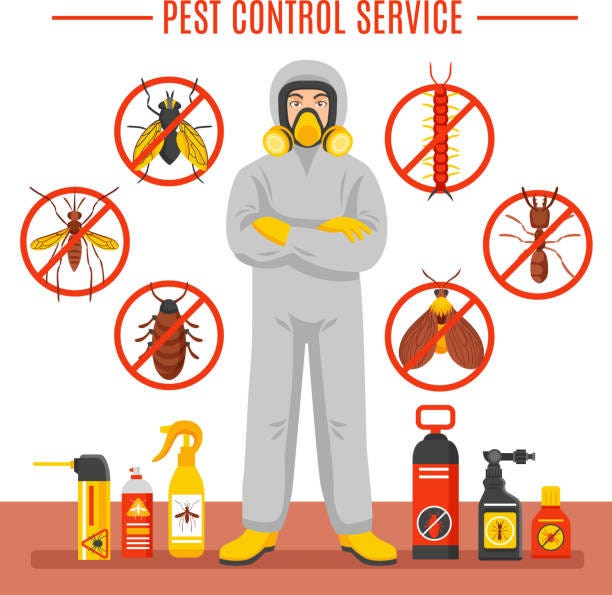Expert A1 Charlotte Bed Bug Exterminator - High Quality Service Guaranteed
Expert A1 Charlotte Bed Bug Exterminator - High Quality Service Guaranteed
Blog Article
Bed Pest Therapy Failure: Contrasting Chemical Vs. Non-Chemical Solutions
In the realm of pest control, particularly when dealing with the consistent issue of bed insects, the selection between chemical and non-chemical therapy options can be a crucial one. Both methods use distinct benefits and drawbacks, influencing variables such as efficiency, security factors to consider, and general expense. By taking a look at the nuanced details of each technique, a clearer understanding of which path to pursue in addressing a bed pest infestation can be achieved.
Performance of Chemical Therapies
Chemical treatments for bed insect invasions have been extensively acknowledged for their fast and potent efficiency in eliminating these bugs. When taking into consideration the performance of chemical therapies, it is important to recognize that they can provide a extensive and quick service to a bed bug trouble.
In addition, chemical therapies have the advantage of offering residual effects, indicating that they can continue to get rid of bed insects also after the preliminary application. This residual action is particularly useful in combating any kind of possible re-infestations. Additionally, the fast action of chemical therapies can bring alleviation to individuals facing extreme bed insect infestations, permitting them to reclaim control of their space rapidly.
Safety And Security Interest In Chemical Solutions
One essential element that calls for cautious consideration when utilizing chemical solutions for bed bug therapy is guaranteeing the security of passengers and the setting. While chemical therapies can be effective in eradicating bed insects, they may present risks otherwise dealt with effectively. One of the main safety worry about chemical remedies is the possible damage they can cause to human health. Direct exposure to specific chemicals utilized in bed pest therapies can lead to respiratory system concerns, skin inflammation, or various other adverse responses, especially in individuals with pre-existing problems or level of sensitivities. Additionally, incorrect application or dose of chemical pesticides can cause toxic deposits lingering in the treated area, positioning long-lasting wellness risks to residents.
In addition, the environmental impact of chemical services is another substantial factor to consider. Some chemicals used in bed bug treatments might be hazardous to beneficial insects, wildlife, and ecological communities if they leach into the dirt or water supply. It is important to use chemical therapies deliberately, complying with safety standards, and thinking about less hazardous options to alleviate these risks and make certain the effective and safe monitoring of bed pest problems.
Advantages of Non-Chemical Strategies
Thinking about the possible safety and security concerns and ecological impact connected with chemical services for bed pest treatment, exploring non-chemical methods presents an appealing alternative with a number of distinctive benefits. Non-chemical therapies are eco pleasant, as they do not add to air or water pollution, making them a lasting choice for parasite control.
In addition, non-chemical options can be effective in targeting bed pests, consisting of hard-to-reach locations where chemical treatments may not pass through - A1 bed wikipedia reference bug exterminator charlotte. Methods such as warmth treatment, vacuuming, heavy steam cleaning, and mattress coverings give detailed removal without the use of dangerous chemicals.
Limitations of Non-Chemical Treatments

In addition, non-chemical treatments usually require multiple applications to attain successful eradication. This can be time-consuming and may not always assure full removal of all bed insects and their eggs, specifically in hard-to-reach or hidden areas.
Moreover, the success of non-chemical treatments greatly relies on proper implementation and thoroughness, which can be challenging for people without expert proficiency. Inadequate application of non-chemical approaches might result in insufficient eradication, bring about consistent infestations and the demand for added treatments.
Therefore, while non-chemical treatments have their benefits, it is necessary to recognize these constraints and consider them when establishing one of the most efficient method for handling bed pest infestations.
Price Comparison: Chemical Vs. Non-Chemical Options
Provided the constraints connected with non-chemical therapies, a crucial aspect to evaluate in the context of bed insect administration is the cost comparison between chemical and non-chemical alternatives. In comparison, non-chemical therapies like heat therapy or steam a fantastic read can be extra pricey, with expenses ranging from $1,000 to $6,000 for a whole home. While the first expense of chemical treatments may seem reduced, several treatments might be called for to completely eliminate the infestation, possibly enhancing the general price.
Verdict

Considering the potential safety problems and ecological influence connected see here now with chemical solutions for bed pest treatment, checking out non-chemical approaches offers an encouraging alternative with several unique benefits.Given the restrictions associated with non-chemical treatments, an essential aspect to review in the context of bed pest monitoring is the cost comparison in between chemical and non-chemical alternatives. In comparison, non-chemical therapies like warm treatment or steam can be a lot more expensive, with costs varying from $1,000 to $6,000 for an entire home. While the preliminary cost of chemical therapies might appear lower, multiple treatments may be called for to totally get rid of the problem, possibly boosting the total price.In verdict, when comparing chemical and non-chemical bed insect treatment options, it is vital to consider performance, security, advantages, constraints, and expense.
Report this page